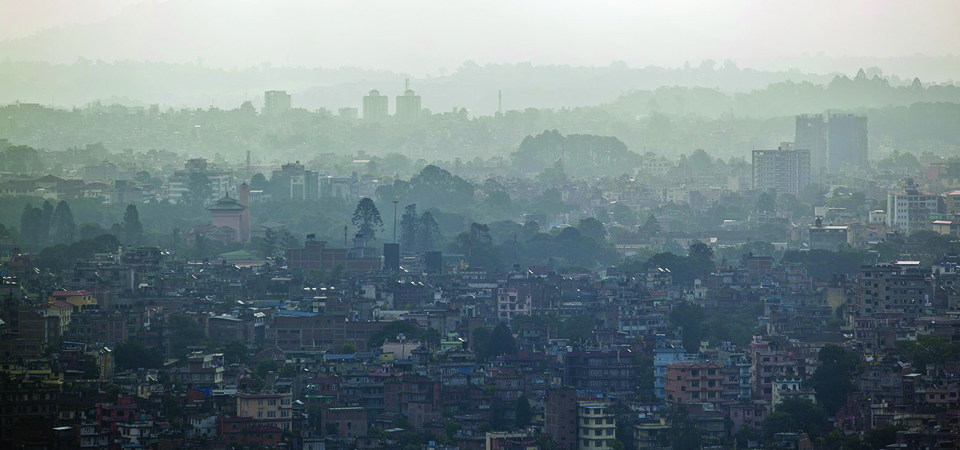Air quality in Kathmandu will improve: Experts

By Keshab Raj Poudel
Kathmandu, Jan. 7: Every year during the winter season, the air pollution level in major cities of Nepal used to cross the dangerous level. Despite having limited resources, the Department of Environment used to organise various awareness programmes.
The cloudy weather in various cities across the nation including the Kathmandu Valley led the air pollution to hazardous level.
While the officials at the Department of Environment were waiting for rainfall or the blazing sun to bring the hazardous level of air pollution down, the environmentalists were claiming that dense clouds covering the cities had increased the air pollution level.
Meteorologist Barun Poudel of Meteorological Forecasting Division on Tuesday had said that the weather condition would improve from Wednesday onwards.
It is not unusual to experience cloudy weather during winter, however, the fact that the air pollution had reached a hazardous level is alarming, say the environmentalists. The Air Quality Index (AQI) from 300 to 400 and above is considered to be hazardous. Many cities across the nation had crossed the danger level on Tuesday.
The AQI of Kathmandu on Tuesday was at 437, the highest after installation of Real-Time Air Quality Index. On Wednesday morning, the AQI at Ratnapark area was 114.
The environmentalists have said that even though the air pollution level in Kathmandu might increase until the valley experiences rainfall but the air quality would improve in the days to come.
“The air pollution level might decrease as the scorching sun would tear apart dense clouds,” added meteorologist Poudel.
Indu Bikram Joshi, deputy director-general of the Department of Environment, said that in the previous years, the AQI of the big cities of Nepal including the Kathmandu Valley used to be between 150 to 200.
On Wednesday, the Real-Time Air Quality Index (AQI) recorded around 200 in the Valley, however, the pollution is still problematic in Hetauda. But it is gradually decreasing in the main city areas of the country, Joshi said.
He clarified that the condition of air pollution would improve from Thursday. “As we have not observed rainfall for a long time this year, the air pollution level accelerated,” said Joshi.
Joshi added that efforts were being made in coordination with the local level to reduce air pollution.
He further informed that the AQI was at 170 in Biratnagar, 234 in Hetauda, 195 in Janakpur, and 191 in Sauraha.
According to Joshi, the hazardous pollution on Monday and Tuesday was due to hazy weather in Kathmandu.
Poudel, the senior meteorologist at the Department of Hydrology and Meteorology (DHM), said that the weather on Monday and Tuesday was due to the influence of the westerly wind but the weather on Wednesday became clear as the westerly wind gradually went out of Nepal.
“The air pollution in the valley was due to the hazy weather. It might repeat again as the winter is still there,” he said. There is no chance of rainfall for another 10 to 15 days in Nepal,” Poudel said.
Recent News

Do not make expressions casting dout on election: EC
14 Apr, 2022
CM Bhatta says may New Year 2079 BS inspire positive thinking
14 Apr, 2022
Three new cases, 44 recoveries in 24 hours
14 Apr, 2022
689 climbers of 84 teams so far acquire permits for climbing various peaks this spring season
14 Apr, 2022
How the rising cost of living crisis is impacting Nepal
14 Apr, 2022
US military confirms an interstellar meteor collided with Earth
14 Apr, 2022
Valneva Covid vaccine approved for use in UK
14 Apr, 2022
Chair Prachanda highlights need of unity among Maoist, Communist forces
14 Apr, 2022
Ranbir Kapoor and Alia Bhatt: Bollywood toasts star couple on wedding
14 Apr, 2022
President Bhandari confers decorations (Photo Feature)
14 Apr, 2022










